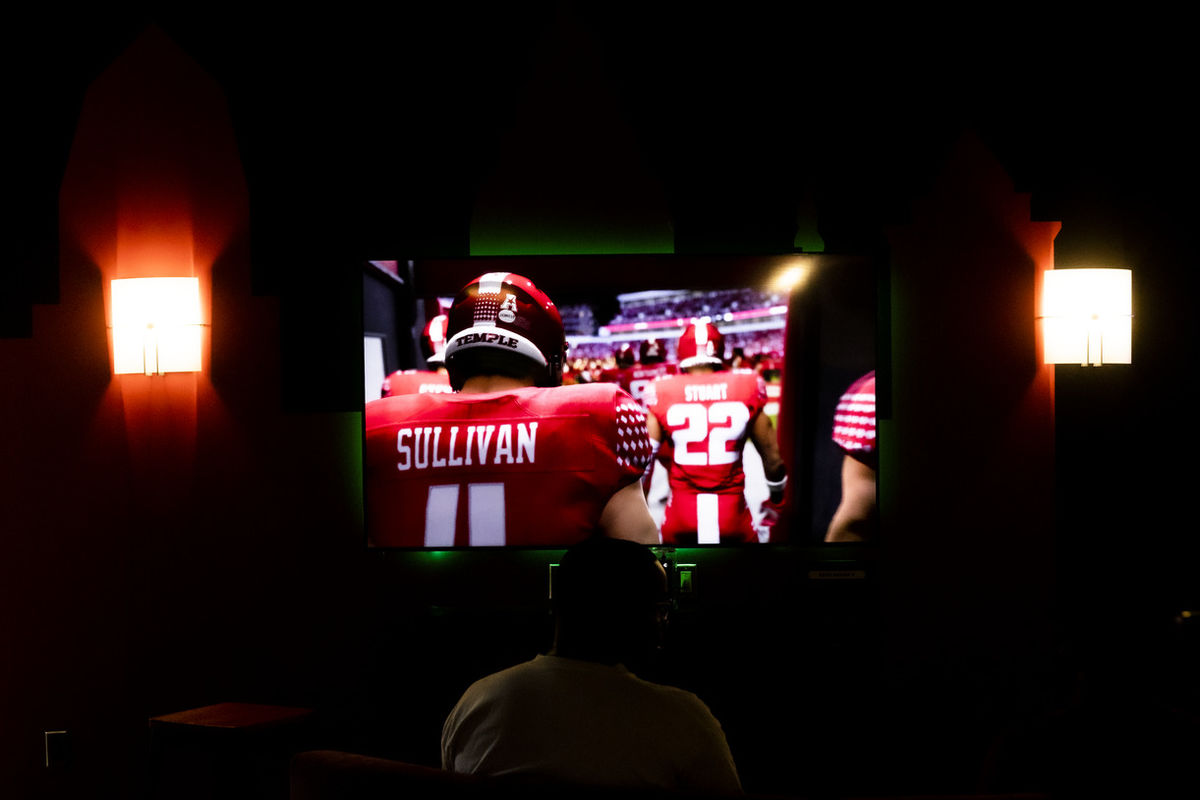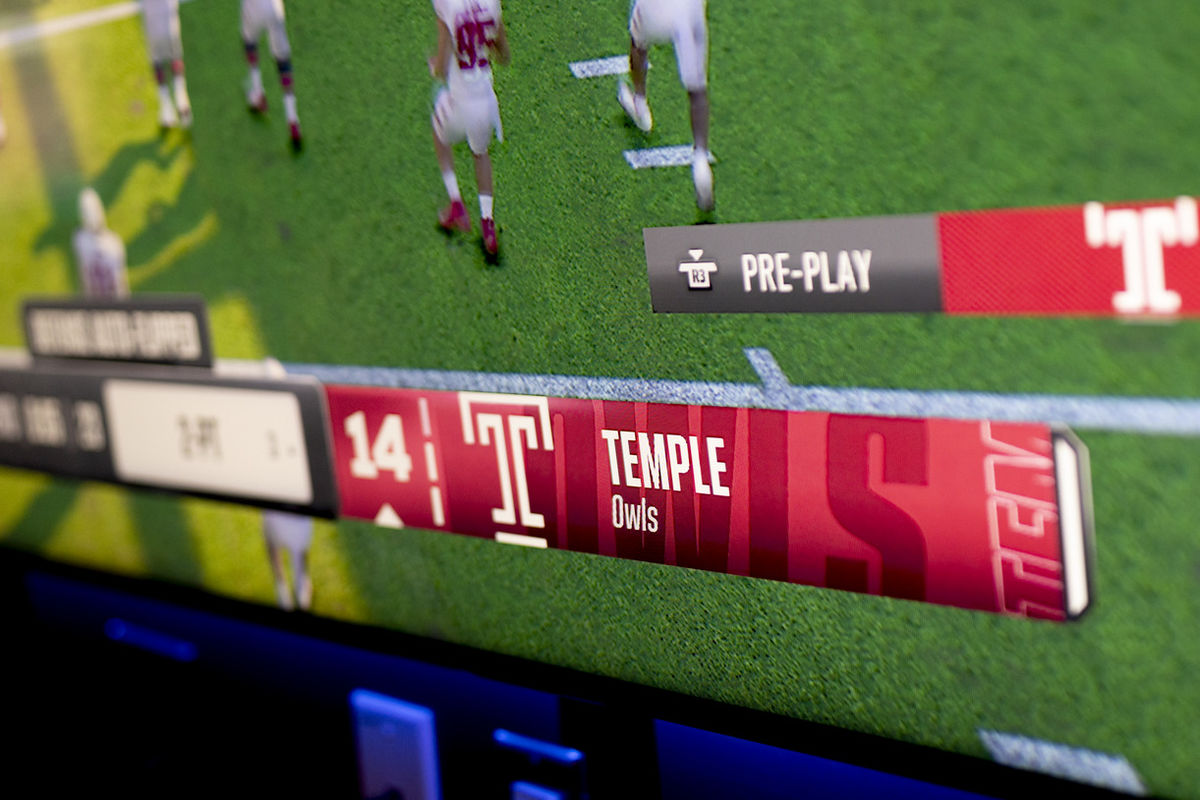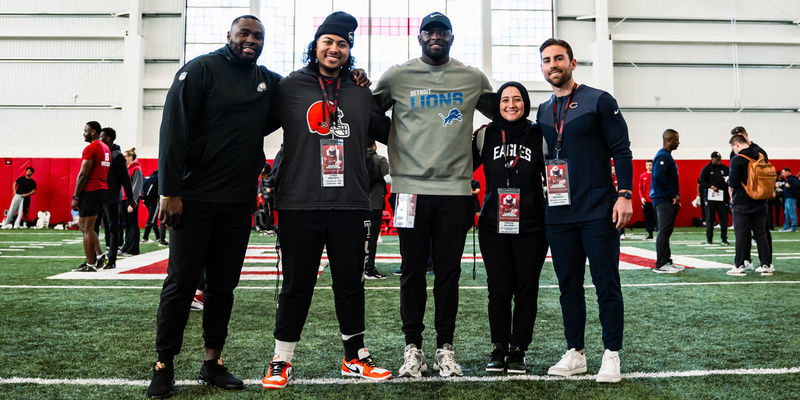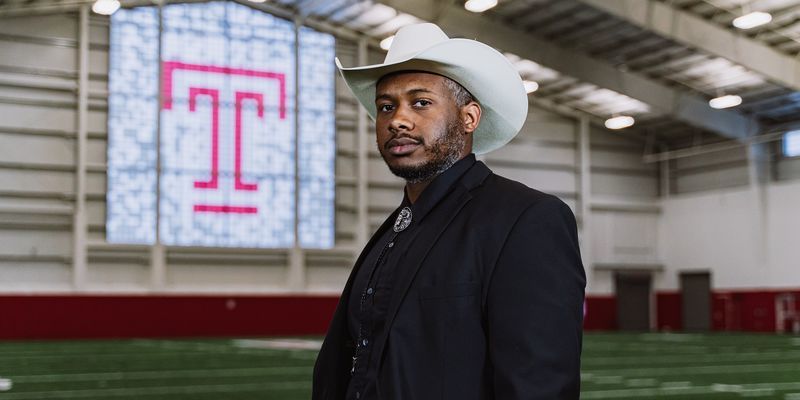Everything to know about ‘College Football 25’ and Temple’s place in it
EA Sports recently launched College Football 25, the first college football video game since 2013, and the Temple Owls are one of the many teams featured in the game.

After 11 long years, thanks to new rules regarding name, image and likeness (NIL), EA Sports, the division of Electronic Arts that develops and publishes sports video games, has finally brought its college football video game franchise back to the market, releasing EA Sports College Football 25 on Friday, July 19. It is unquestionably one of the most anticipated sports video game releases in history, and the Temple Owls are one of the 134 Division I FBS schools in the game.
In previous versions of college football video games, players were left unnamed because it was against NCAA rules for a collegiate athlete’s likenesses to be used for profit. Now, under the new landscape of NIL, EA Sports revealed that more than 11,000 collegiate athletes received a $600 payment and a deluxe version of the game for allowing their NIL to be used in the final product. It is the first time in history that this has been done.
Thilo Kunkel, a professor at Temple University’s School of Sport, Tourism and Hospitality Management, is one of the foremost academic experts on athlete brand development and monetization. He explained how previous versions of EA’s NCAA video games played a crucial role in influencing the NIL landscape today.
According to Kunkel, this can be traced back to 2009 when former UCLA basketball player Ed O’Bannon first filed a lawsuit against EA Sports and the NCAA after seeing his likeness used in EA Sports’ NCAA Basketball 09 without his permission. Other former college athletes joined O’Bannon in the lawsuit, which led to Electronic Arts and the NCAA finalizing a $40 million settlement with college football and basketball players who appeared in EA Sports video games since 2003. As a part of the settlement, EA stopped producing college football video games in 2013.
“In EA’s case, a sports game without the athlete’s likeness is just not that exciting because people want that connection with the individual player,” said Kunkel. “So being allowed to pay college athletes for putting their likenesses in a video game will give the athletes more exposure to a worldwide audience, allowing them to further build their social media followings and NIL brands. That is especially true given the amount of buzz this game is getting.”
Kunkel mentioned the example of United States men’s national soccer team star Matt Turner, who noted that he became a fan of Arsenal F.C. because of the EA FIFA video game.
It was because it was the first team that appears when players select teams, given that the team’s name starts with A.
“Some players will only play as Arsenal and start following all their star players on social media or buying their merchandise just because they enjoy playing with them in the video game,” Kunkel said. “It is just a strong example of the power of sports video games and having these athletes exposed to a different target audience.
“From a research perspective, the more brand associations, which are any thoughts connected to a particular brand, we hold towards an athlete and the more information gathered on them, the more likely a consumer is to become a fan or committed supporter of the athlete,” he added. “So being featured in video games provides brand awareness for the athlete and gives fans (players of the video game) the opportunity to learn more about the athlete, creating positive brand associations in the process.”
 Joquez Smith, a running back at Temple University playing EA Sports College Football 25 as himself. (Photography by Ryan S. Brandenberg)
Joquez Smith, a running back at Temple University playing EA Sports College Football 25 as himself. (Photography by Ryan S. Brandenberg)
EA Sports carefully designed and rated thousands of real-life college football players in the country, and this includes several players who can be found at 10th and Diamond streets in North Philadelphia. Temple’s highest-rated players include
-
offensive lineman Wisdom Quarshie (82 overall),
-
wide receiver Dante Wright (80 overall),
-
running back Joquez Smith (77 overall),
-
defensive end Tra Thomas (78 overall),
-
cornerback Torey Richardson (76 overall) and
-
defensive tackle Latrell Jean (76 overall).
Sights and sounds
College Football 25 includes Lincoln Financial Field, the home stadium of the Owls, which is authentically designed in all things cherry and white from the cheerleaders, marching band and fans to the Temple “T” logo at the 50-yard line.
Temple's iconic “T for Temple U" fight song is heard during the Owls’ stadium entrance where they run onto the field and after touchdowns are scored.
There are still some notable omissions. Several team mascots are in this game, yet Hooter the Owl is not.
Also, Temple’s Head Coach Stan Drayton will not be seen gracing the sidelines in virtual form—no college football coaches are included, with EA instead deciding to focus on the players, schools and traditions.
“It’s great that current players can be paid and recognized for their role and fans are excited about playing with their favorite schools and players. What a win-win situation,” said Drayton, whose team attended a launch event for the game at the Howard Gittis Student Center on Friday.
“You can see by the interest in today’s event that it’s not only important to football players but a good part of the college population who are active gamers,” he added. “Interest in college football—real or in gaming—is at an all-time high.”
 College Football 25’s new Road to Glory mode allows players to create a player and build on their legacy from start to finish. (Photography by Ryan S. Brandenberg)
College Football 25’s new Road to Glory mode allows players to create a player and build on their legacy from start to finish. (Photography by Ryan S. Brandenberg)
D.J. Woodbury, a linebacker for the Owls, is among the viral mass of sports fans excited about the first college football video game in more than a decade.
“To have my real name in an NCAA college football video game has been a childhood dream as far back as I can remember,” said Woodbury, one of Temple's players with multiple special abilities in the game.
“Seeing our Temple team and myself in the game for the first time gave me the ultimate shock,” he added. “I hope to get my rating up.”
Gameplay
As for the gameplay, every imaginable detail is included, from school traditional chants to players glancing at the sidelines at staff holding up poster boards to decode a coach’s instructions. Even loud college stadium atmospheres can disrupt the road team’s offense, to where the players’ icons won’t be visible and the play chart may show the wrong play or squiggly shaking routes.
The new “wear-and-tear” system affects a player’s rating based on how many consecutive downs where they receive physical contact are played. For example, if Forrest Brock, the Owls’ quarterback, takes multiple hits to his throwing arm, his throwing power and accuracy stats will then temporarily decrease.
 In College Football 25, players have more control at pre-snap to disguise their look on defense and can show up to five or six different alignments. (Photography by Ryan S. Brandenberg)
In College Football 25, players have more control at pre-snap to disguise their look on defense and can show up to five or six different alignments. (Photography by Ryan S. Brandenberg)
The game features familiar commentators, including Chris Fowler, Kirk Herbstreit, Rece Davis, Jesse Palmer, Desmond Howard and more. Woodbury added that he is impressed with the ball carrier control and realism of EA’s new game. He already declared College Football 25 the “best game ever.”
“Every player’s movement is smooth and fluid, and how a player jumps up from the ground in excitement after making a big play,” he said. “It has a crowd loudness meter that goes up and down based on which team has the most momentum.
“I also like the amount of plays you can run from the playbook; you can tell EA put a lot of time into making the gameplay enjoyable and more realistic than prior years,” he added.
Dynasty Mode
As for what team Woodbury plans to play with, he adamantly said, “Only Temple, and I will make them a top team in the nation.”
Gamers alike can take on that challenge of building their favorite school’s program to the 12-team college playoff in College Football 25’s online dynasty mode, which includes managing a coaching staff and roster through recruiting visits, the transfer portal and more for up to 30 seasons. It also allows the customization of conferences, so users can move Temple back to the Big East, MAC, or any other conferences they choose.
Also read
Become an Owl: Learn more about applying for one of our undergraduate, graduate or professional programs.


